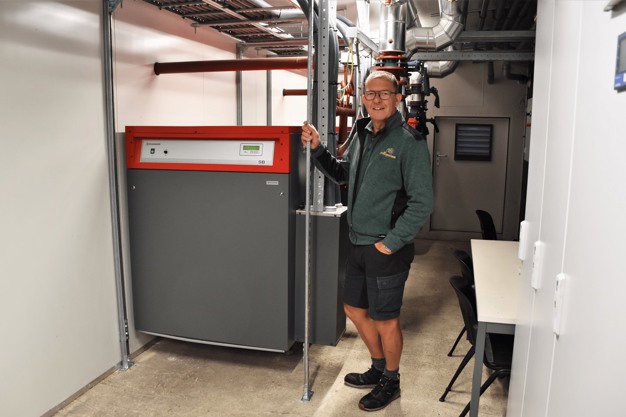Mopabloem has recently installed two electric boilers in collaboration with Bosman Van Zaal. This installation aims to optimize their energy costs and embrace a more sustainable future. In a recent interview with Coen Haakman, Operational Director of Mopabloem, the details of this ambitious project were unveiled.
"For 25 years, UK’s greenhouse horticulture has been the regulatory valve of the UK’s electricity market by supplying combined heat and power (CHP) at attractive prices during times of scarcity. A lot has changed in 25 years. The capacity of the changing energy mix, with a greater share of wind and solar, has become as variable as the weather, and the electricity grid is effectively overloaded. By deploying E-boilers, the sector expands its role as a national regulatory valve by relieving the grid during surpluses. And, of course, this is done at attractive prices, significantly reducing energy costs for the horticultural business," Martien Klein, Climate Expert at Bosman Van Zaal.
E-Boilers as a Revenue Model
Managing energy costs remains an ongoing challenge for businesses in the greenhouse horticulture sector, where finding the right balance between electricity generation and gas consumption is crucial. Mopabloem has embraced this challenge by introducing electric boilers as a powerful tool to optimize their energy costs. The decision to install electric boilers, with a capacity of 1200 kW for load balancing and 1000 kW for regulating solar panels, allows Mopabloem to lower energy costs and generate additional income by regulating emergency power. Additionally, one of the boilers can store solar energy during periods of high irradiation, even when electricity prices turn negative.
Integration and Maintenance
The project commenced in December 2022 and became operational in July of this year. The integration of this technology into an existing greenhouse environment is complex and requires patience and expertise. The integration of the electric boilers into the greenhouse heating system is seamless through pipelines connected to the heat storage system and an open buffer system. Maintenance of the electric boilers is minimal, and their lifespan is 30 years.

Reducing Costs and Environmental Footprint
Coen Haakman, Operational Director of Mopabloem, emphasized the importance of this investment as a step toward sustainability: "We chose to introduce electric boilers because we aimed not only to reduce our energy costs but also to lower our environmental footprint. Our customers increasingly demand more sustainable practices, and we want to meet those expectations."
"Our goal is ultimately to say, 'Between May and November, we no longer use fossil fuels.' Mopabloem aims to rely entirely on renewable energy sources in the future and reduce its dependence on fossil fuels."
Specifications of the E-Boilers
The capacity of the electric boilers is impressive, with 1200 kW for load balancing and 1000 kW for regulating solar panels. They also offer remarkable energy efficiency, with each kilowatt of electricity resulting in a kilowatt of heat with no losses in pipelines or storage tanks. Additionally, the boilers comply with all safety standards and anticipate future regulations related to central heating boilers. The warm-up time for the E-boilers is just 30 seconds to reach 1200 kW at full power, and the desired greenhouse temperature is achieved in less than a minute. Moreover, the E-boilers are exceptionally quiet.
Smart Monitoring and Control
The boilers are connected to a "box" for regulating and optimizing the electricity grid. This innovative approach allows for remote monitoring and control. Coen Haakman emphasized the importance of this technology and its ability to swiftly switch between different energy sources: "We enlisted Energy Pool to optimize our systems. This box, equipped with built-in AI, makes predictions for the next day and contributes to reducing energy consumption costs. It's a valuable addition to our energy management."
Pioneering with a Strong Partner
The collaboration with Bosman Van Zaal has proven to be invaluable. "Bosman Van Zaal is, in a way, our heating DNA, and all our logistical systems are closely intertwined with BVZ. This technical challenge demands not only expertise but also creativity. We didn't just set up a system and see how it worked; we worked with a partner who knows our business structure inside and out. For those with a passion for technology, this is truly a magnificent project. It was executed carefully and efficiently and proceeded rapidly."
Conclusion
This project is the result of a successful partnership between Mopabloem and Bosman Van Zaal. It has enabled us to push boundaries and integrate new technologies into an existing environment. We are confident that this project will have a positive impact on the greenhouse horticulture sector and represents a step in the right direction toward sustainability and energy efficiency.
For more information: Bosman Van Zaal
Bosman Van Zaal
+31 297 344 344
[email protected]
www.bosmanvanzaal.com
